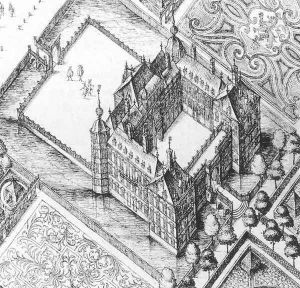Balthasar Florisz. van Berckenrode Paintings
Balthasar Florisz. van Berckenrode was a Dutch cartographer and engraver born in 1591, during a period known as the Dutch Golden Age—a time marked by great wealth, cultural achievement, and expansion of trade for the Netherlands. Van Berckenrode is best known for his detailed maps and cityscapes, which are valuable historical records of urban development in the 17th century.
Van Berckenrode's work often involved creating large, intricate city maps that were both accurate and aesthetically pleasing. His most famous work is likely the 1625 map of Amsterdam, which is celebrated for its detail and artistry. This map showcased the city during a time of rapid expansion and has been invaluable for historians studying the urban development of Amsterdam.
Not much is known about van Berckenrode's personal life or training; however, his work indicates that he had a strong grasp of geography and a talent for engraving. It is believed that he worked in Amsterdam for most of his career, which allowed him direct access to the burgeoning cityscapes that would become the subjects of his maps.
During his lifetime, van Berckenrode would have been part of a thriving community of cartographers and artists in the Netherlands. The Dutch were at the forefront of cartography in the 17th century, and maps were in high demand both for practical navigation and for display as symbols of wealth and knowledge.
Balthasar Florisz. van Berckenrode died in 1644, leaving behind a legacy of work that provides an invaluable glimpse into the Dutch Golden Age. His maps continue to be studied and admired for their historical significance and craftsmanship.
